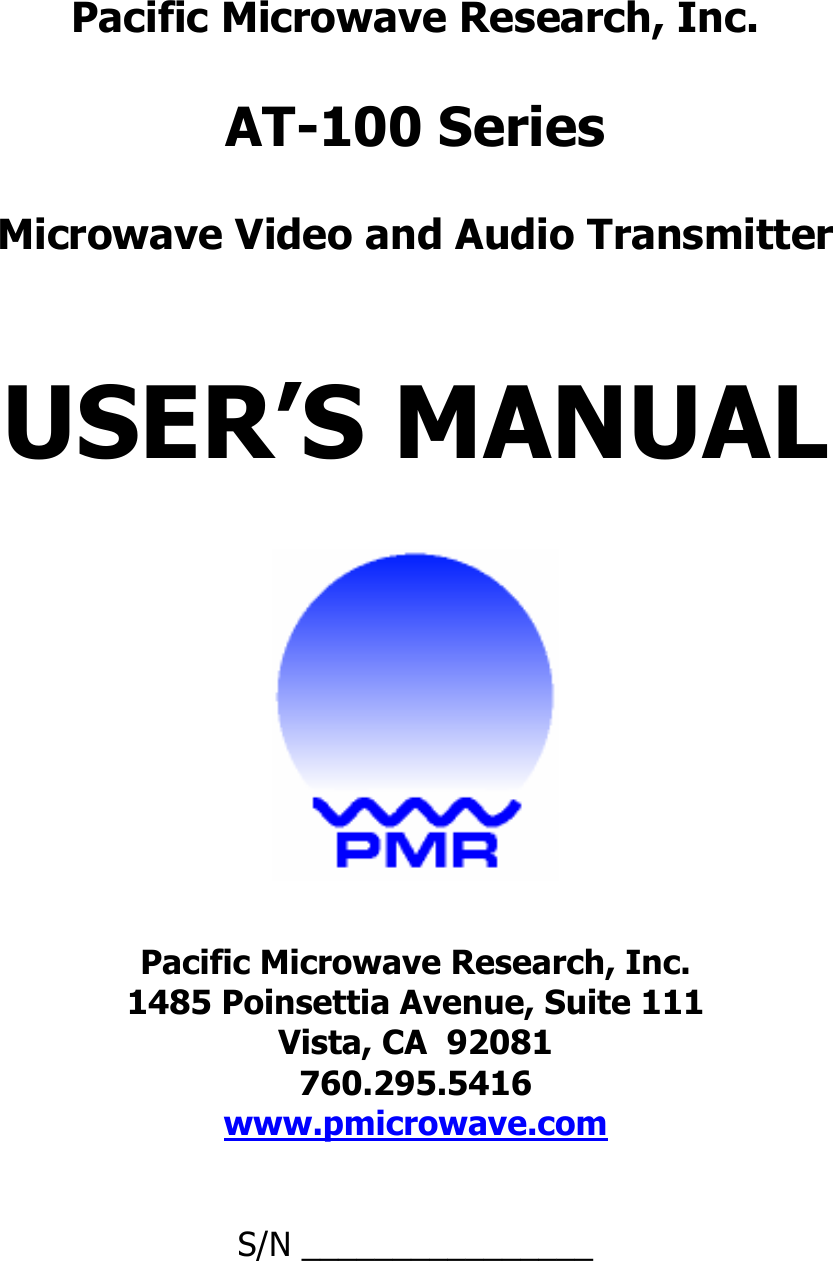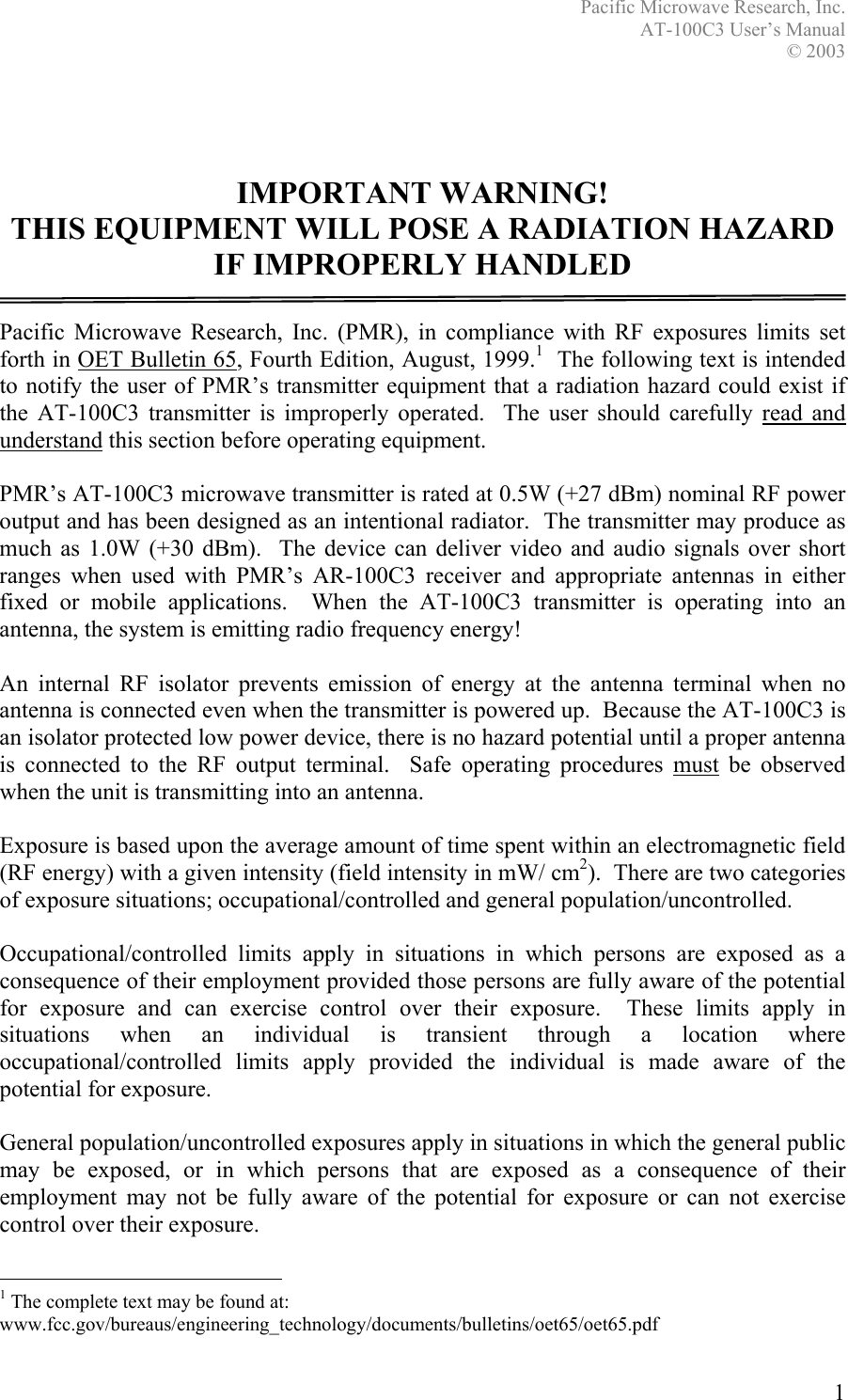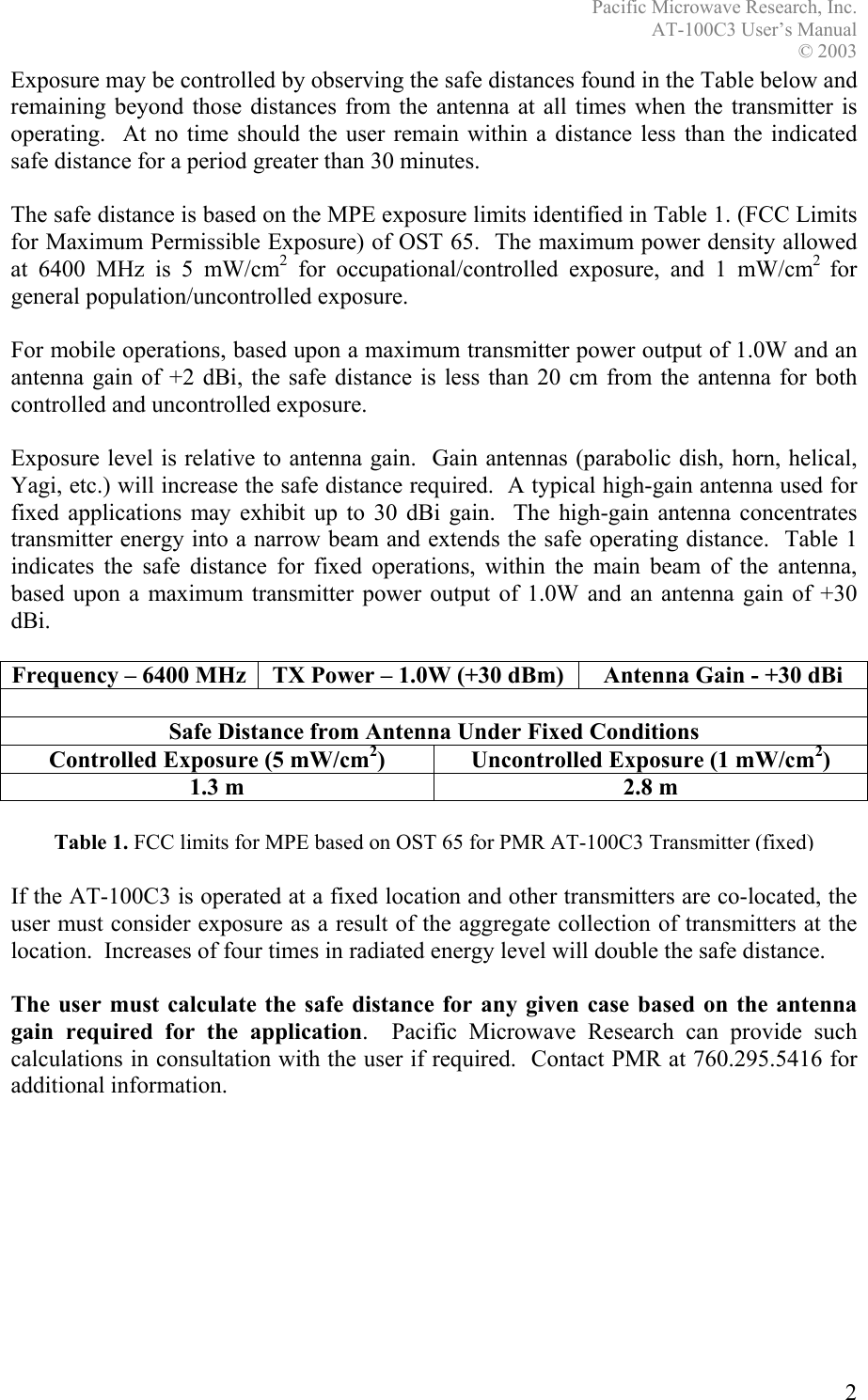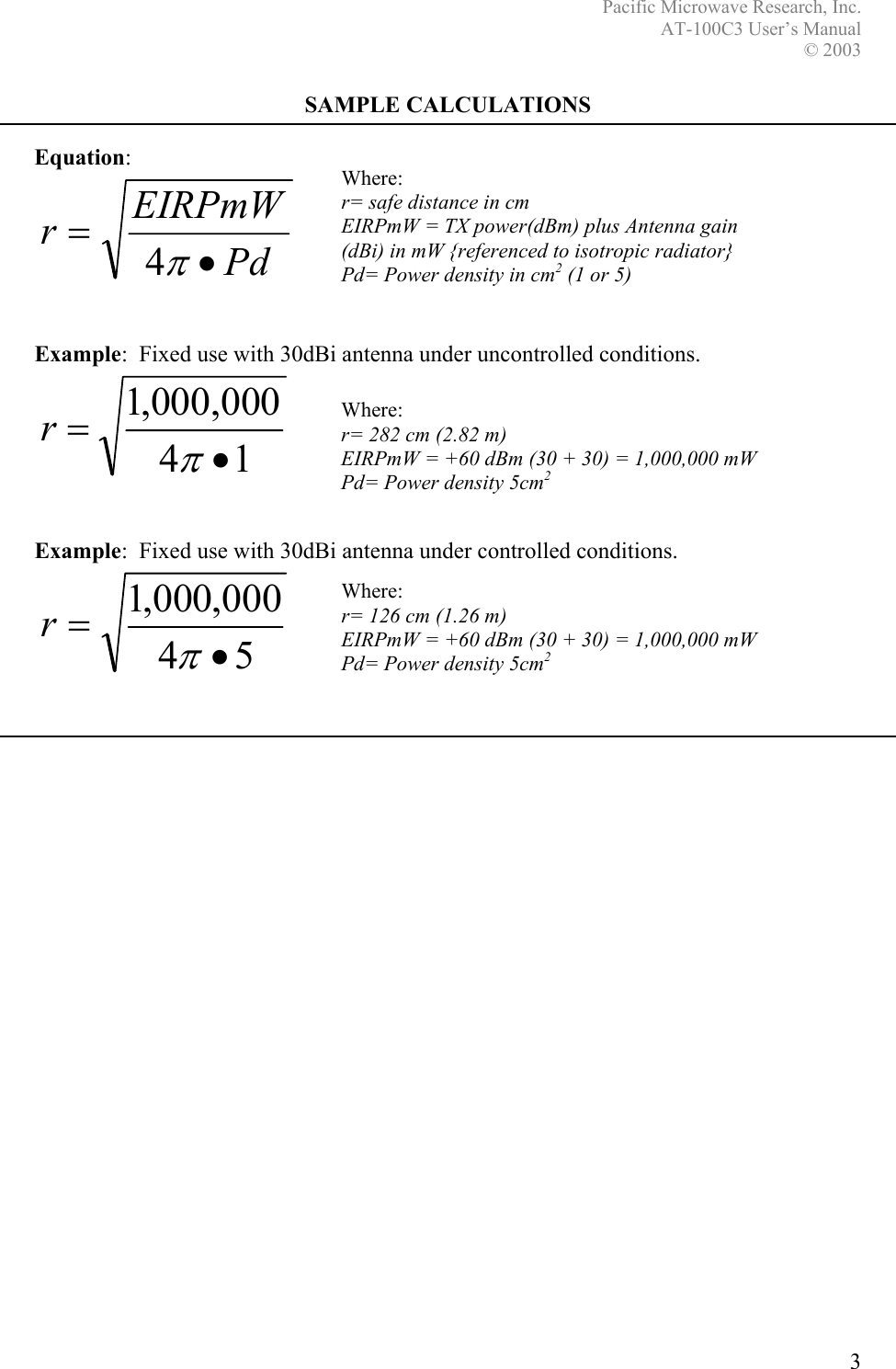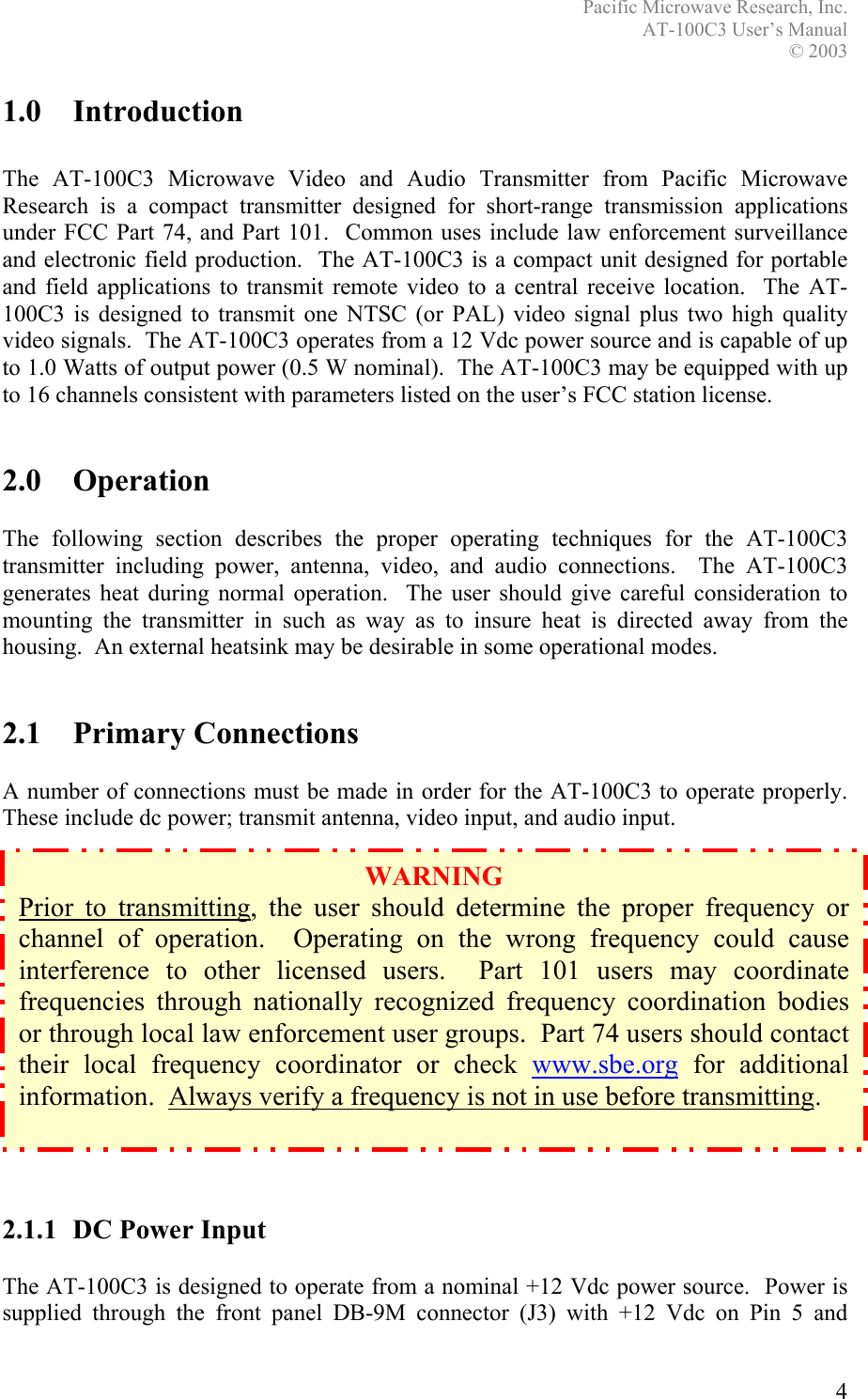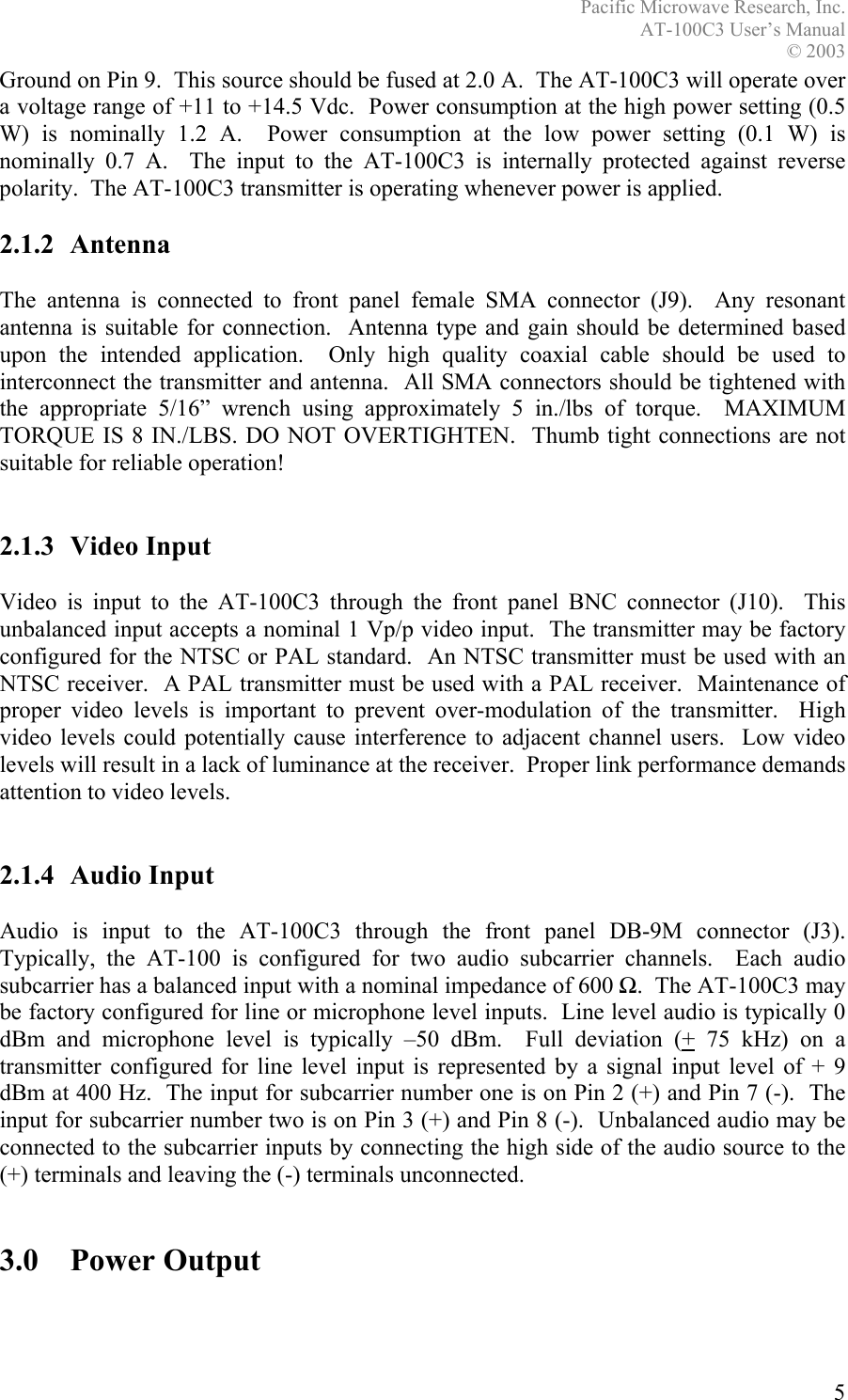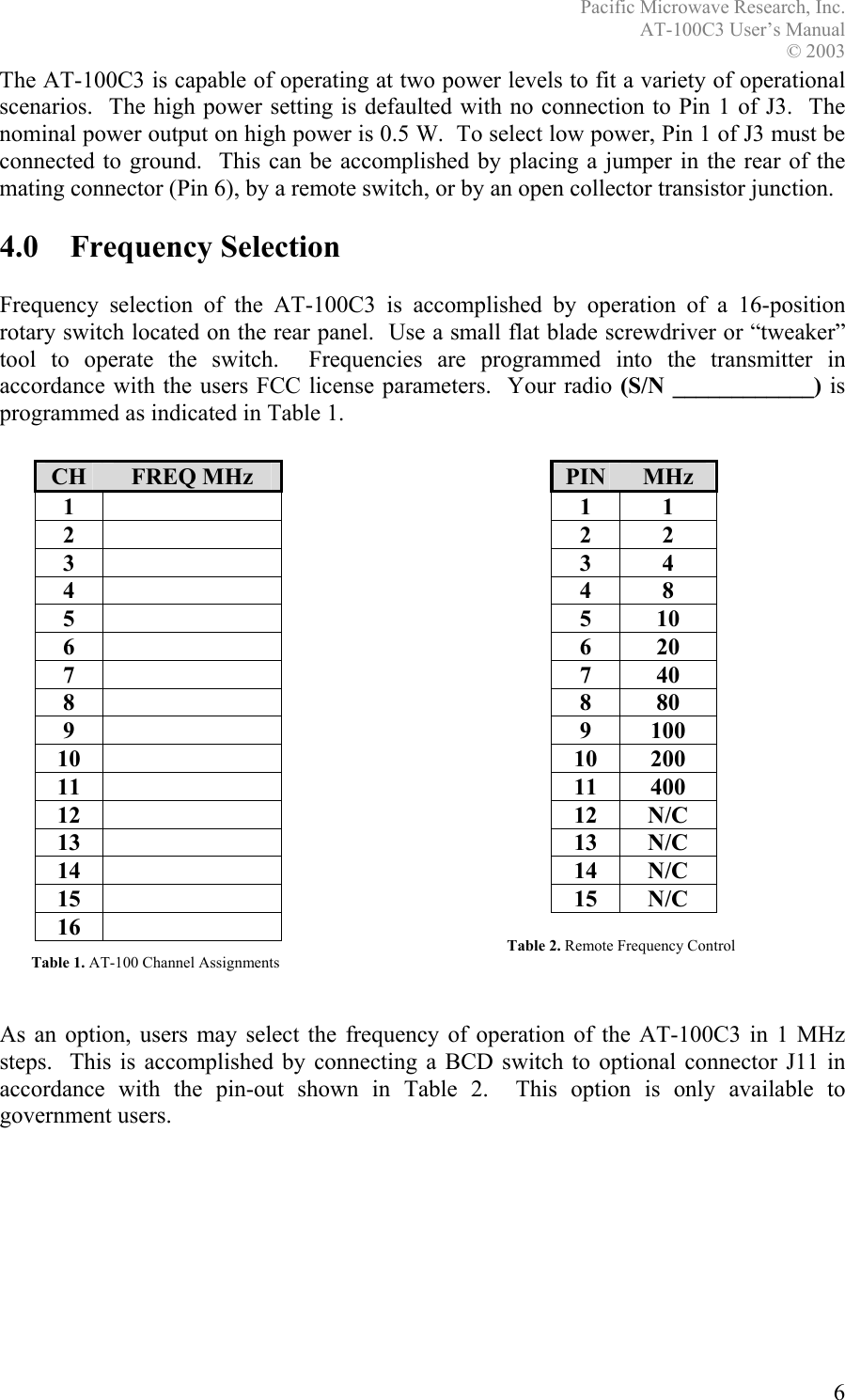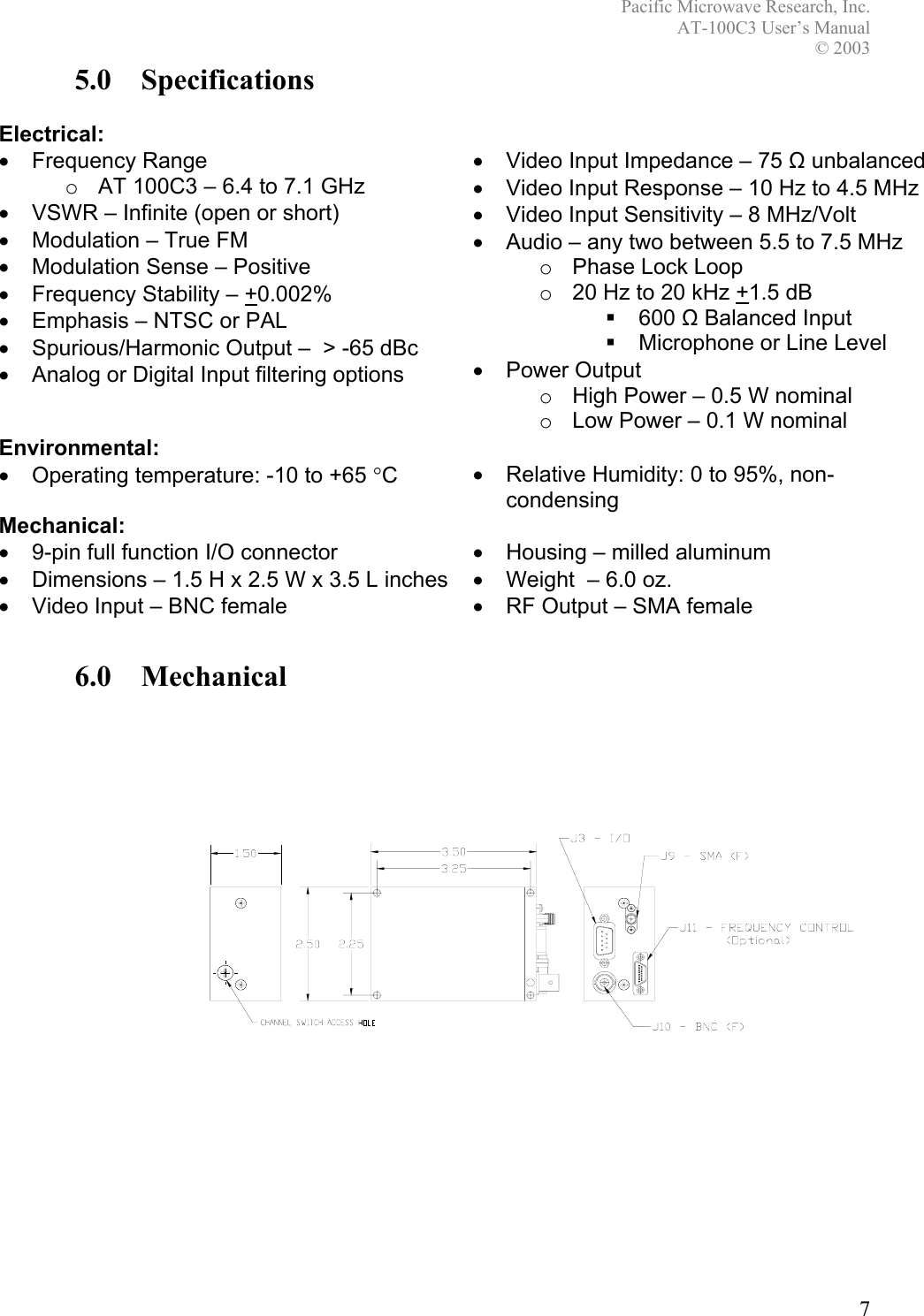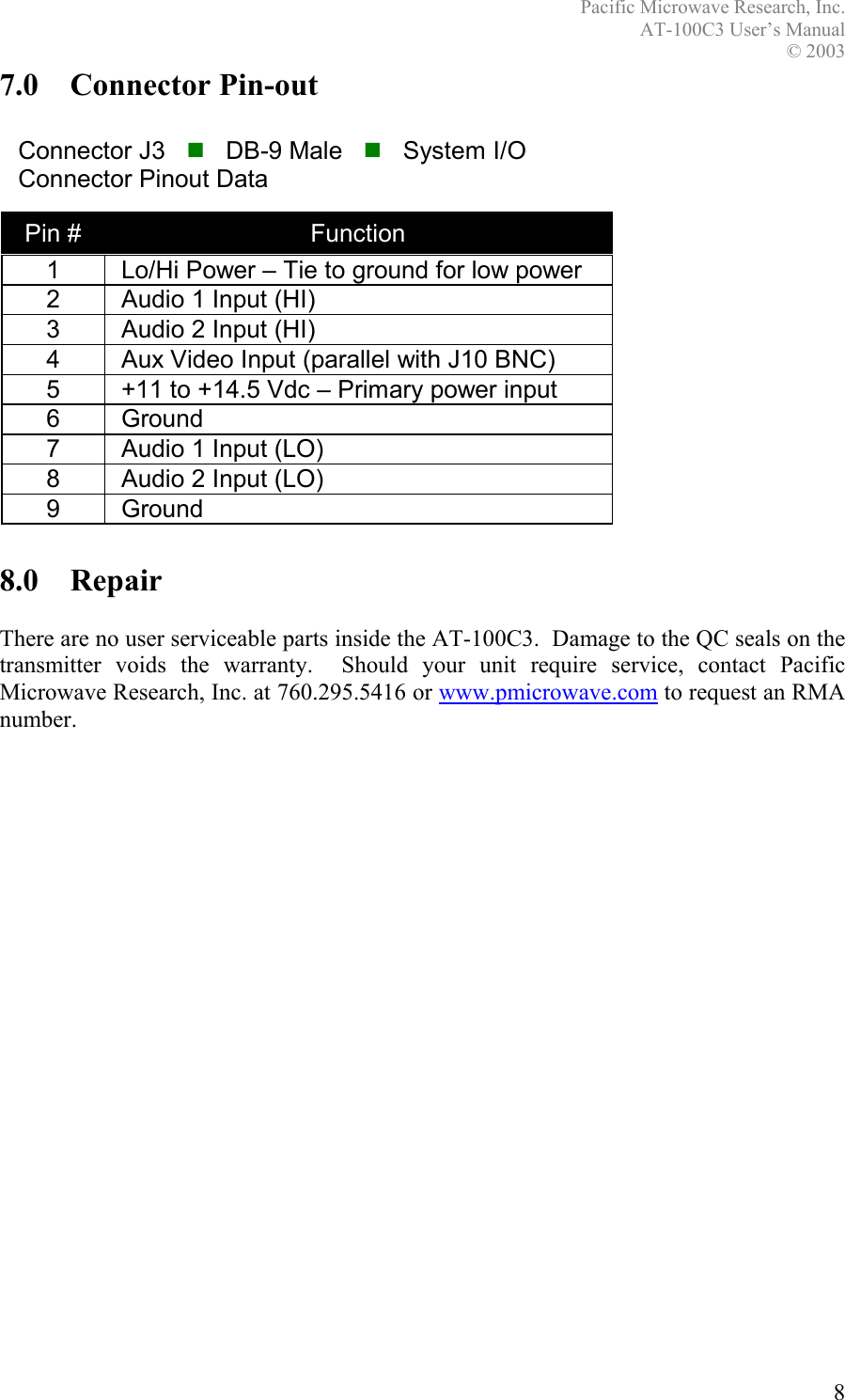Pacific Microwave Research AT100C3 Microwave Video and Audio Transmitter User Manual AT 100C3 User s Manual REV1
Pacific Microwave Research, Inc. Microwave Video and Audio Transmitter AT 100C3 User s Manual REV1
Contents
- 1. AT100C3 User Manual
- 2. Revised Manual
- 3. REV2 Users Manual
- 4. REV 3 Update
- 5. Radiation Warning Added
- 6. REV 5 User Manual
Radiation Warning Added
